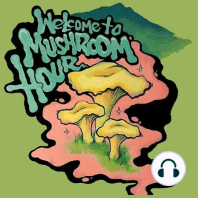61 min listen

Ep. 29: Researching the Mysteries of the Mycorrhizal Network (feat. Professor Tom Bruns)
Ep. 29: Researching the Mysteries of the Mycorrhizal Network (feat. Professor Tom Bruns)
ratings:
Length:
66 minutes
Released:
Jul 21, 2020
Format:
Podcast episode
Description
Today on Mushroom Hour we are honored to be joined by Professor Tom Bruns of the UC Berkeley Dept. of Plant & Microbial Biology. Tom’s primary focus has been fungal ecology, and most of his work in this area has been at the community ecology or autecology levels. The Professor breaks down some fundamentals about the study of ecosystems before he pushes us into the deep end or exploring one of his most researched subjects and one of the most ecologically relevant organisms on the planet - mycorrhizal fungi. It is impossible to overstate the importance of mycorrhizal networks. Ever since plants came out of the nutrient soup that is the ocean, they have enlisted the aid of fungal allies to survive and gather nutrients from the soil. Between the 2 main types, arbuscular mycorrhizal (AM) and ectomycorrhizal (EM) fungi, mycorrhizal fungi connect almost all plants on Earth into their nutrient-exchanging networks. But what are the differences between these groupings of mycorrhizal fungi? What, if any evidence, do we have of their evolutionary history? Much of Tom's research has focused on the ectomycorrhizal (EM) fungi that dominate the temperate forests that many of us are familiar with in the United States. Walking us through the findings of his years of research, it becomes clear that our temperate forests cannot thrive or expand without EM fungi leading the way in colonizing new soil and partnering with new tree seedlings. With loads of EM players involved, and many lacking a big showy mushroom, there is still plenty of mystery when it comes to how mycorrhizal fungi establish themselves and reproduce. We learn about some of the factors that may contribute to successful propagation between different species and quickly come face to face with some of the burning questions when it comes to EM fungi - Why do the most desirable EM fungi like porcini and chanterelle spring up where they do? Is it possible to purposely inoculate trees and cultivate our favorite culinary mushrooms?? Is the ever-mysterious morel mushroom a mycorrhizal fungi? With the aid of ever-advancing sampling technology, we have a better picture than ever of what is going on in the mycorrhizal realm. Tom's lab has been on the forefront of using these cutting-edge technologies to piece together more and more information. As he continually trains amazing scientists to further the study of mycorrhizal relationships, Tom's own work has shifted to focus on how fungi recolonize areas devastated by wildfires. What role do fungi play in helping ecosystems rebound from fire? We wrap up our conversation learning about an infamous ectomycorrhizal fungi, the amanita phalloides or deathcap mushroom, in the context of cutting-edge research from his grad student Catharine Adams. Thanks for listening and Mush Love! Directed, Recorded, Produced by: Mushroom Hour(@welcome_to_mushroom_hour) Music by: Ancient Baby (https://peckthetowncrier.bandcamp.com/) Art by: Wyn Di Stefano (http://www.wyndistefano.com/) Episode ResourcesProfessor Tom Bruns (profile and research papers): https://plantandmicrobiology.berkeley.edu/profile/bruns Tomentella Spore Dispersal via Soil Food Webs (paper): https://nature.berkeley.edu/brunslab/papers/lilleskov2005.pdf Catharine Adams (graduate student): https://plantandmicrobiology.berkeley.edu/profile/cadams
Released:
Jul 21, 2020
Format:
Podcast episode
Titles in the series (100)
Ep. 26: Entangled Life - How Fungi Make Our Worlds, Change Our Minds & Shape Our Futures (feat. Merlin Sheldrake) by The Mushroom Hour Podcast